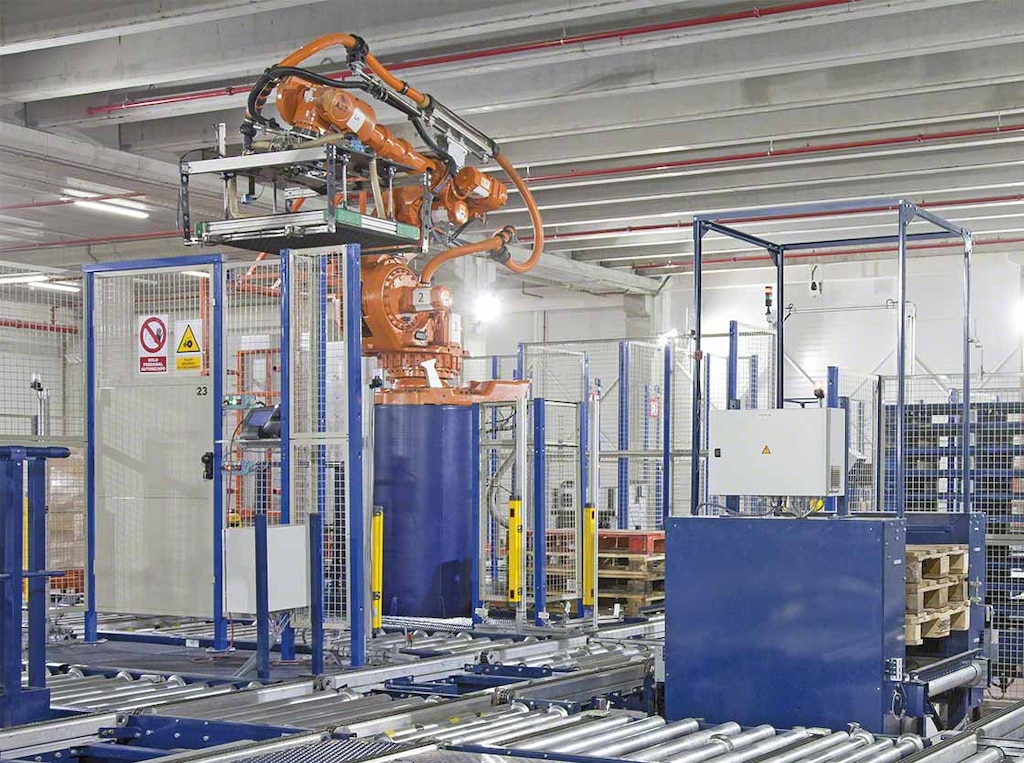
AIoT: digital transformation of the warehouse
Digitization of logistics processes has emerged as the main answer to complex challenges facing warehouses nowadays. This industrial environment, which demands more and more productivity and lower error rates, gave rise to the Artificial Intelligence of Things, or AIoT.
AIoT technology is gradually being installed in the supply chain. A 2020 report from industry trade group MHI estimated that 60% of companies surveyed would use AI in five years.
On top of this, there’s the present — and future — impact of the Internet of Things (IoT): in 2025, there will be more than 64 billion devices with internet access, up 540% compared to 2018, according to a study from Business Insider.
In this post, we analyze the AIoT and highlight its main applications in the warehouse: from greater productivity to the introduction of an automated order prep system.
AIoT: from gathering information to gathering knowledge
The AIoT is the combination of the two technologies that will have the most impact in the coming years: AI (artificial intelligence) and the IoT.
The AIoT enables industrial robots with internet access (IIoT – Industrial Internet of Things) to improve their throughput, measuring their workflows and learning by monitoring their actions without the need for human intervention.
In fact, cloud computing plays a crucial part in this fusion of technologies: beyond machine-to-machine (M2M) information exchanges, the various smart devices with internet access collect the data they generate and send them to the company’s servers.
While the IIoT describes processes involving the storage, recording, and analysis of the data produced by the automated elements in the facility, the combination of the IIoT and AI technology allows these devices to interpret and compare their own information to establish more agile and productive work patterns and methods on their own.
Advantages of implementing AIoT technology
The incorporation of AI in the warehouse makes it possible to:
- Have more productive and efficient IoT devices.
- Improve human–machine interaction.
- Increase the weight of metrics and information monitoring in operations, especially in the industrial environment.
All of this will result in improved service for end customers, who will receive their orders without errors and as per the agreed-upon conditions and time. In a nutshell, you’ll achieve the main goal of logistics.
Among the benefits that the application of this technology brings to businesses, increased revenue stands out. According to a study by SAS, promoted by Intel and Deloitte, 34% of companies surveyed that had implemented AIoT technology had done so precisely to increase their turnover.
In the end, with this technology, warehouses will go from collecting all the information generated by these devices to gathering knowledge, with the ability to analyze these metrics to prevent inefficiencies and improve the facility’s productivity.

AIoT applications in the warehouse
The AIoT will provide installations with devices capable of improving operators’ work, boosting productivity, and reducing errors in operations taking place in the facility.
AI will protect and enhance the security of the various devices that make up the smart warehouse. And that will mean that the instillation will generate a plethora of data that need to be monitored, analyzed, and verified.
Among the many examples of how this technology will affect logistics, we should highlight the role that these devices will have in the warehouse:
- Cobots (collaborative robots): these devices are created to interact in a working environment with humans to free workers from the most repetitive, complex, or hazardous tasks.
- Digital twins: these comprise digital replicas of facilities and their workflows and goods flows. They are used to apply new methodologies without interfering with the operation of the installation.
- Drones: from package deliveries to the supervision of warehouse processes in environments with adverse environmental conditions, drones offer a wide range of possibilities in Logistics 4.0.
Additionally, the AIoT can drive trends in various areas in the industrial sector, such as smart cities, smart retail, and self-driving cars. Delving deeper into the future of automobiles, a report by consulting firm Oliver Wyman and the German Association of the Automotive Industry (VDA) finds that, in less than a decade, 15% of the global vehicle fleet will be smart.
AIoT: automation in Industry 4.0 facilities
Challenges such as omnichannel retail and demand seasonality require warehouses in the Logistics 4.0 era to be more flexible, more productive, and to significantly reduce the margin of error in their operations.
By integrating AI technology — algorithms — in devices with internet access, processes such as storage and order picking can be completely automated, thereby optimizing resources and maximizing warehouse efficiency.
